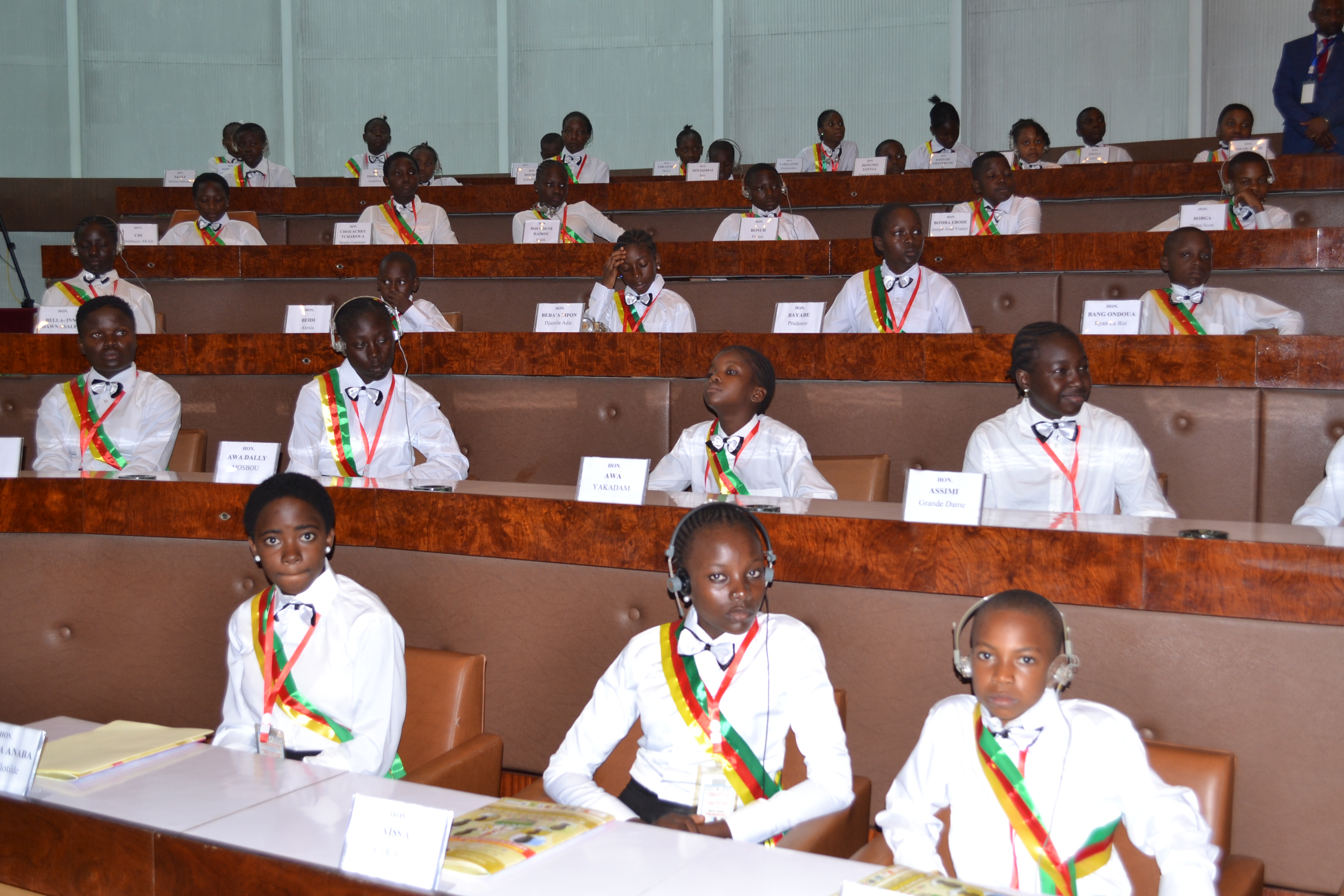From 1998 to 2001, MINEDUC (Ministry of Education and Training) selected eligible schools based on criteria previously established by a technical committee (exam success rates, enrollment and success rates for girls, compliance with hygiene and sanitation regulations, etc.), as well as the children's vote. For its part, MINAS (Ministry of National Education and Training) was responsible for identifying children in difficult circumstances, those who had dropped out of school, and those who were socially maladjusted.
From 2002-2003, MINAS became the primary coordinator for the organization of the Children's Parliament. Since then, there has been a clear effort to integrate children with disabilities, albinos, and those from "vulnerable indigenous communities." To this end, MINAS has successfully established partnerships with several United Nations and civil society organizations.
Selection Procedures for Junior Members
A "good" selection process must simultaneously meet the objectives of impartiality, transparency, and representativeness. The criteria for the selection process have evolved somewhat, although some fundamentals remain the same. Thus, it has always been expected that junior members would be elected by their peers, that they would have to meet criteria of academic excellence and moral qualities, and that their selection would respect a concern for representativeness in terms of gender, geographic origin, and living conditions (orphans, children with disabilities or from "marginal populations," etc.).
Furthermore, to allow as many children as possible to experience the Children's Parliament, they are not eligible for re-election. Finally, to ensure consistency with the National Assembly, the number of junior members has always been set at 180 full members, plus 180 substitute members. It should be noted that in 1998, only children from the Centre Province (Yaoundé and surrounding areas) were selected. The process was then extended to the East Province in 1999 and then to all 10 provinces of Cameroon starting in 2000. Furthermore, the age range of eligible children has also expanded somewhat, from 9 to 15/16 years old in the first few years, and subsequently increased to 9 to 17 years old.
a) Selection Criteria
Junior Deputies are elected by their peers, whether they are children in school or not. They must be highly representative of both sexes (girls and boys), and of different categories of children: those with disabilities (physical disabilities, blind and deaf-mute children, albinos), marginalized populations (Pygmies, Bororo, Montagnards), street children, etc.
For the traditional school system, they are elected from among the best students, particularly the top five (05), in public or private primary (CMI) or general secondary schools (grades 6, 5, 4, 2) and technical (grades 1, 2, 3, and 2); for the non-traditional system, they are chosen from among the best students in centers (social, multifunctional, or for the promotion of women and the family), public or private childcare institutions (orphanages, private social services, etc.). As such, for children in school, the application for the selected DJ must include copies of their report cards for the last two terms of the previous year (2014/2015) and the first term of the current year (2015/2016). They must also be between the ages of 9 and 17.
Note: The selection of each DJ in the traditional school system is certified by their Head of School, and for other categories, by the heads of the structures that supervise them.
b) Selection Process
Under the supervision of the Regional Governors, the Regional Delegates for Social Affairs, MINEDUB, MINESEC, MINJEC, and MINPROFF, based on the quota of Junior Deputies reserved for the Region, determine the Departments to be covered (at least half of the Region's total), as well as the schools and facilities within them, giving priority to those that have not yet participated in the PE. They also define the schedule of visits to the selected facilities and inform the public via radio announcements and the heads of facilities or facilities via letters or hand-delivered messages. In any case, the activity must receive extensive media coverage.
Explanations are provided to the heads of facilities on the main articles of the CDE as well as on the selection process for the students or children concerned. The election of DJs is carried out by their peers on the basis of a secret ballot or a show of hands, by a simple majority of the votes cast and on the declaration of candidacy of the child to be elected himself. Each successful candidate campaigns on his ability to validly represent his comrades by proposing a question addressed to a member of the Government and a suggested answer to the latter. In the event of a tie,

